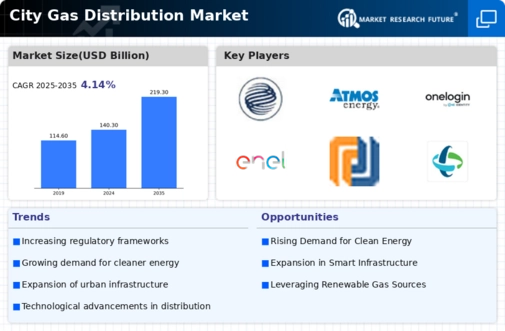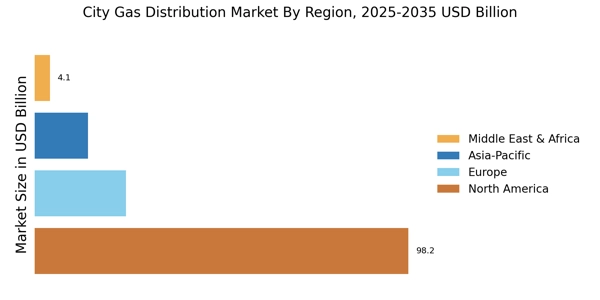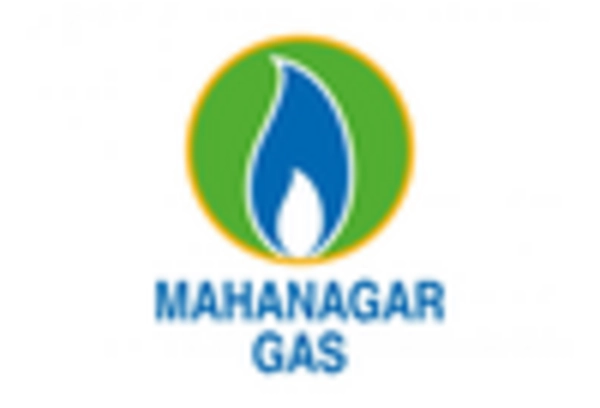Rising Demand for Clean Energy
The increasing The City Gas Distribution Industry. As nations strive to reduce carbon emissions, natural gas is often viewed as a transitional fuel that can facilitate a shift from more polluting energy sources. The International Energy Agency indicates that natural gas consumption is projected to rise, with a significant portion attributed to urban areas. This trend suggests that city gas distribution networks will expand to meet the growing demand for cleaner energy alternatives, thereby enhancing the market's growth prospects.
Urbanization and Population Growth
Urbanization continues to accelerate, with more individuals migrating to cities in search of better opportunities. This demographic shift is likely to drive the City Gas Distribution Market as urban centers require efficient energy solutions to support their expanding populations. According to recent statistics, urban areas are expected to house nearly 70% of the world's population by 2050. This surge in urbanization necessitates the development of robust city gas distribution systems to ensure reliable energy supply, thereby fostering market expansion and infrastructure investment.
Government Initiatives and Policies
Government initiatives aimed at promoting natural gas usage are likely to bolster the City Gas Distribution Market. Many countries are implementing policies that encourage the adoption of natural gas as a cleaner alternative to coal and oil. For instance, various governments are offering incentives for infrastructure development and investment in city gas distribution networks. These supportive measures may lead to increased market penetration and expansion, as regulatory frameworks evolve to favor natural gas adoption, thus enhancing the overall market landscape.
Technological Innovations in Distribution
Technological advancements in the city gas distribution sector are poised to transform the market landscape. Innovations such as smart metering, automated control systems, and enhanced pipeline monitoring technologies are being integrated into city gas distribution networks. These advancements not only improve operational efficiency but also enhance safety and reliability. The adoption of such technologies is likely to attract investments and drive growth within the City Gas Distribution Market, as stakeholders seek to optimize their operations and reduce costs.
Increased Industrial Demand for Natural Gas
The industrial sector's growing reliance on natural gas as a primary energy source is expected to significantly impact the City Gas Distribution Market. Industries such as manufacturing, chemicals, and power generation are increasingly turning to natural gas due to its cost-effectiveness and lower emissions compared to traditional fuels. Reports indicate that industrial consumption of natural gas is on the rise, which may necessitate the expansion of city gas distribution networks to accommodate this demand. This trend suggests a robust growth trajectory for the market as industries seek reliable energy sources.


















Leave a Comment